Through a series of workshops dedicated to the discovery and preservation of our environment, combining artistic activities, practical experiments, and fundamental discoveries, children will explore the wonders of nature and understand the importance of protecting our planet through simple daily actions. With a focus on biodiversity, recycling, water filtration and conservation, solar energy, and many other accessible topics, we encourage young people to develop an ecological awareness and a commitment to the protection of the planet.

Sciences, arts, function, form… a little bit of each! Let’s be creative and build a tree from various articles from nature. We will study the purpose of each component in this imaginative activity.
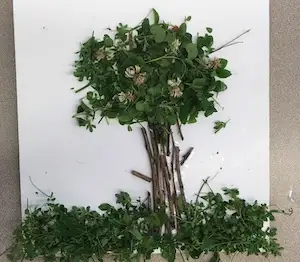
Let’s merge science, art, function, and form, prioritizing originality through the reconstruction of a tree using elements from nature. This imaginative activity explores plant components and the importance of each in plant anatomy, as well as the crucial role of trees in the ecosystem. By using natural materials, let’s delve into plant structures and grasp botanical principles while expressing our creativity. This immersive experience highlights the connection between nature and STEAM disciplines.
What is the relationship between a seed and a plant? Where do the leaves or stems come from? What does a seed or a plant need to grow? Let’s see all this in a long, slow-paced experiment.
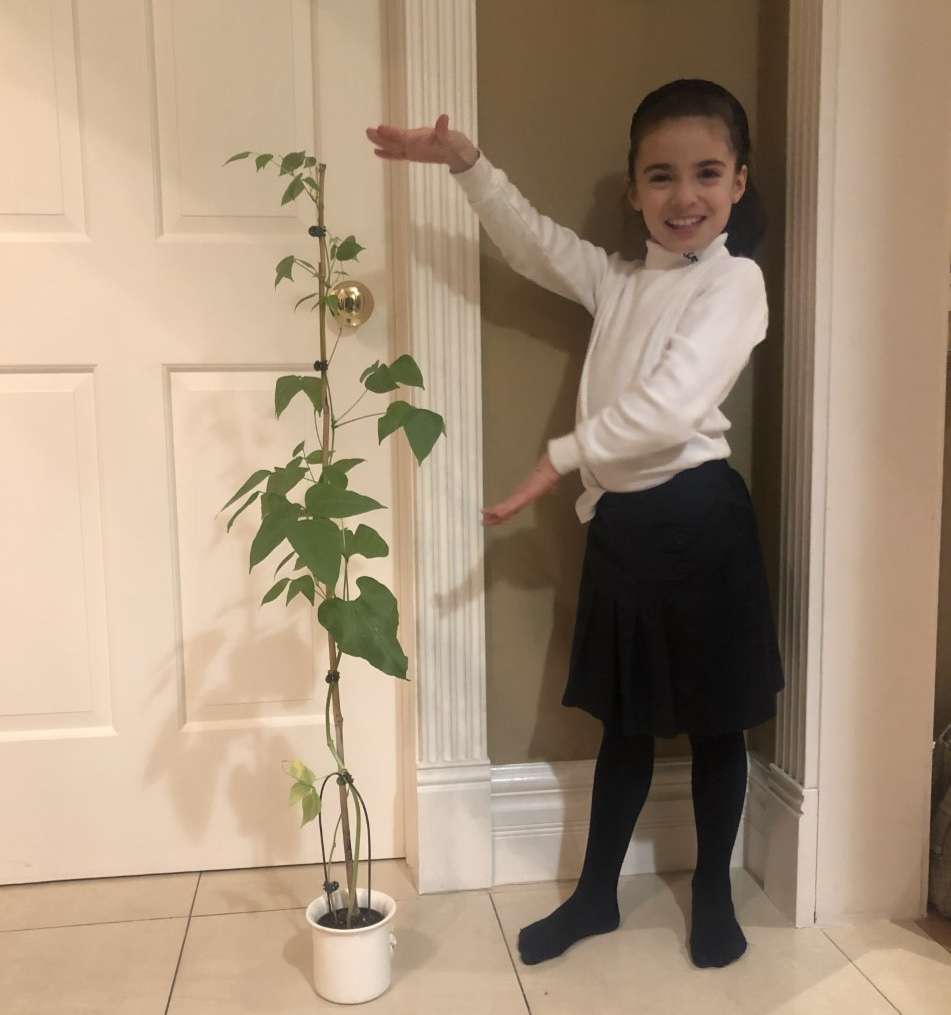
In this long-term experiment, children plant a seed and observe its development into a plant. They discover the origin of leaves and stems while exploring the essential needs of plants for their growth, such as water, air, light, and nutrients. This engaging activity provides a direct understanding of the connection between the seed and the mature plant, sparking curiosity about the plant growth process.
The colours of the leaves are beautiful in the fall; all the red, orange, yellow and other automn shades! But, why aren’t leaves green? Let’s do an experiment to understand.
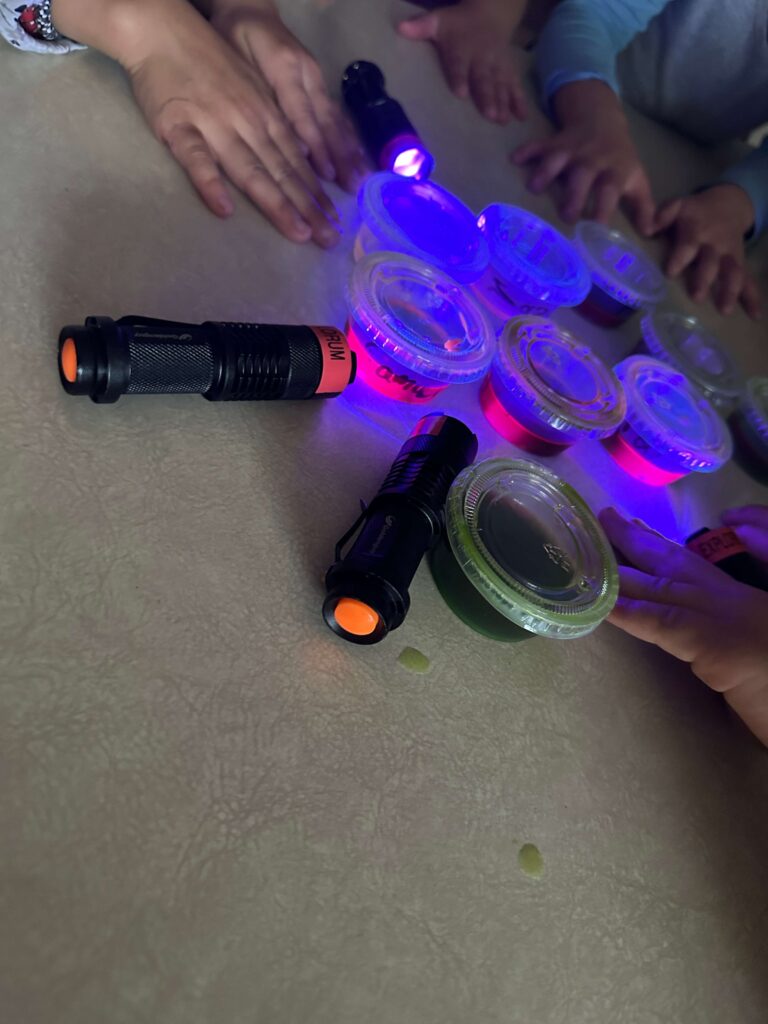
In this autumnal workshop, let’s extract chlorophyll, the vital substance for plants and our ecosystem, from green leaves and compare the chlorophyll content in yellow, orange, and red autumn leaves using UV light to observe the characteristic fluorescence of chlorophyll. Then, let’s compare the solution extracted from green leaves with those from leaves that have changed color. A fascinating experiment to illustrate seasonal changes in plants and their adaptation to autumn.
The frog is an strange animal; it can live in or out of the water – it is amphibian – and has different looks in its life cylce… Let’s take a closer look in this artistic 3D workshops!
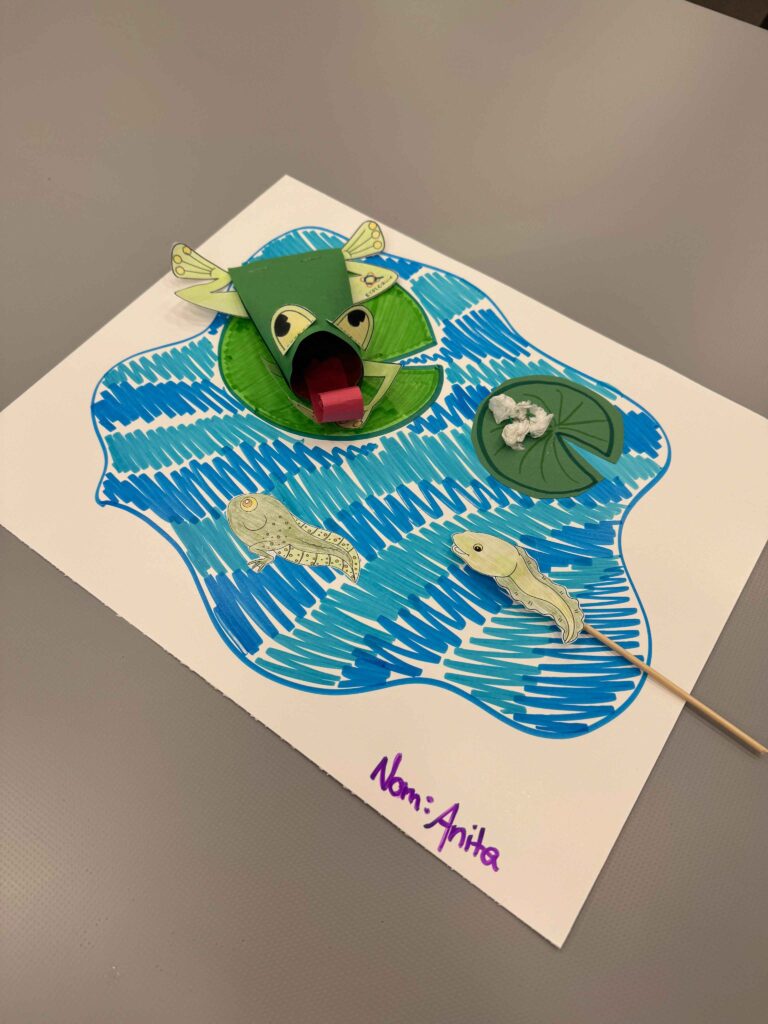
Frogs, those small amphibians that cheerfully croak near ponds in the summer, don’t always look like frogs. They metamorphose! In this artistic workshop, let’s explore the life cycle of the frog by recreating its different stages of development: the egg, the tadpole, and the adult frog. Let’s unleash our creativity to recreate each step of this exceptional animal’s life cycle. While gaining a visual and tactile understanding of the frog’s metamorphosis process, let’s appreciate one of nature’s many wonders.
Butterfly, cocoon, crysaliad, worm… Are these all the same organism? Yes! We will rebuild its life cycle, squiggles and all, in a 3D artistic workshop.

Butterflies, those delicate creatures fluttering through gardens and meadows, undergo an incredible transformation throughout their life cycle. In this artistic workshop, let’s embark on a journey through the stages of the butterfly’s life: from the egg, to the caterpillar, the chrysalis, and finally, the magnificent butterfly. With our creativity as our guide, let’s recreate each stage of this mesmerizing transformation. As we visually and tactilely explore the butterfly’s life cycle, we’ll marvel at the wonders of nature’s remarkable process of metamorphosis.
Catastrophe! The oil tanker had an accidental leak: 300,00 litres of crude oil poured near the coast. Both flora and fauna are affected! Let’s observe the consequences of an environmental upheaval.

In this STEAM workshop, children simulate an oil spill in the sea and its impact on birds, then test different detergents to determine the most effective way to clean wildlife and flora after an environmental disaster. By studying the chemical properties of detergents and observing their effectiveness on contaminated surfaces, they explore environmental sciences and enhance their understanding of the importance of preserving marine ecosystems.
Volcanic eruptions are generally disastrous: burning lava all the fumes that could be potentially deadly. Ours will be completely safe, if anything it will be artistic, innocent, and will guide us towards volcanism

Let’s transform into mini-volcanologists and build our own lava mountain! With homemade dough and a good dose of imagination, let’s decorate our volcano before making it erupt. Armed with flour, salt, and baking soda, let’s explore the hidden secrets behind volcanic eruptions. By observing the simulated magma spread, let’s discover the impacts on the surroundings. A secure adventure into the world of volcanoes not to be missed!
Fossils are the expression of the past, but nature takes thousands of years to make a fossil. In this experiment, we will extract “fossils” and speed up time and make fossils in a few minutes – fake ones of course! But we will understand how some of the real ones were formed.
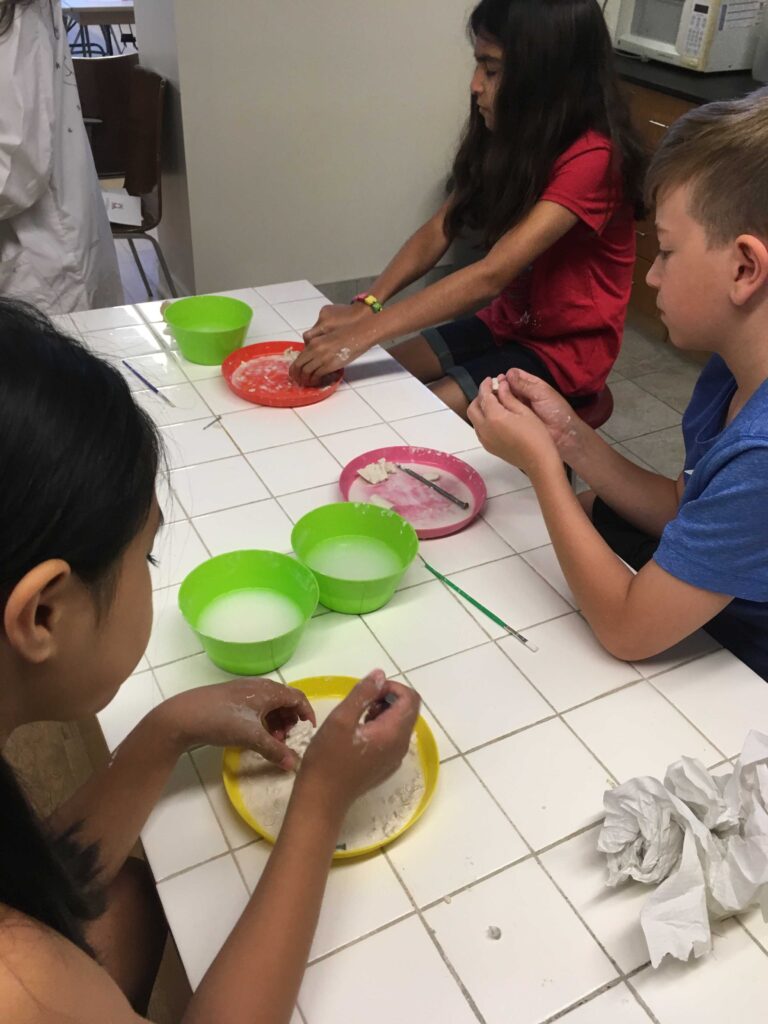
Fossils are the expression of the past, but nature takes thousands of years to create one. Their extraction is also hard and laborious (but also rewarding). In this workshop, we will first excavate fossilized organisms from a “rock” and then speed up time to create fossils in a few minutes – fake ones, of course! These two experiments will give us a better appreciation of the work of paleontologists.
Seventy percent of the earth’s surface is covered with water, but less than 3% of it is drinkable. Filtering water allows us to use more of it. Let’s filter muddy waters to simulate natural and industrial filtration processes.
Join us for a hands-on experience where we filter water using gravel, sand, and other materials. Through this immersive activity, we explore the principles of science, technology, engineering, art, and mathematics (STEAM), while uncovering the process of water filtration and purification. By manipulating different materials and observing the results, we gain an understanding of concepts such as particle size, absorption, and filtration efficiency. This interactive experience promotes a deeper understanding of environmental science and encourages critical reflection on water conservation and purification methods.
Melt chocolate without fire, without an oven or a heater… how is that possible? By building a solar oven, of course!
In this STEM workshop, kids embark on an exciting journey to harness the power of the sun by creating and testing their very own solar ovens. With simple items like cardboard, aluminum foil, and plastic wrap, they construct their solar ovens, learning about solar energy absorption and heat transfer along the way. Once built, they put their ovens to the test, experimenting with different food items to see how effectively their creations can cook using only the sun’s rays. This hands-on experience not only teaches them about renewable energy and sustainability but also sparks their curiosity and creativity in exploring scientific concepts.
Animal trackers recognise animals by their print on the ground. Let’s become trackers today!
Living organisms excel at survival. Whether human, microbe, insect, or plant, adapting to the environment is innate. To what extent can a plant alter its course to ensure survival? In this extended experiment, students sow a seed and track its journey to maturity as a plant. They delve into the origins of leaves and stems while investigating the crucial requirements for plant growth, including water, air, light, and nutrients. How robust is the instinct to survive? How much adaptation will the plant undergo to thrive? These questions drive our exploration in this winding experiment.
Instead of throwing out our used paper we are going to recycle them… not by putting them in a recycling bin, but we will give them another life: make new paper! As a bonus, we will decorate it to our liking!

Instead of throwing away our used paper, we will recycle it to give it a new life. Let’s explore the science of paper recycling, learning about the environmental benefits of waste reduction and resource conservation. Through hands-on activities, let’s transform old paper into new sheets, understanding the recycling process and its impact on the environment. As a creative bonus, we’ll decorate our recycled paper, adding a personal touch to our environmentally friendly creations.
Make plastic out of milk? Thanks to magic!? no, thanks to science, we will transform milk molecules to make plastic. We will then compare our environmentally friendly plastic to industrial plastic.

Explores scientific concepts of diffusion, absorption, chromatography, and capillarity through art. Using our creativity and artistic talents, we’ll be fascinated by color diffusion, water absorption, and witness capillary phenomenon and chromatography results unfold before our eyes. These intriguing findings help us understand how molecules move and interact in different mediums while unleashing our creativity. It’s an invigorating fusion of art and science!
Am I trembling or is earth shaking under my feet?” said Ulysses in his epic adventure in the land of the cyclops. He could have known if it’s an earthquake had he done this experiment…
Let’s dive into the mysterious world of earthquakes by building our own seismograph! Inspired by the words of Ulysses during his journey among the Cyclopes, “Is it me trembling, or is it the ground quivering beneath my feet,” we delve into the science behind earthquakes. By constructing this instrument for detecting seismic movements, we uncover how scientists monitor and measure earth tremors. Let’s explore the dynamics of the earth and the nature of earthquakes.